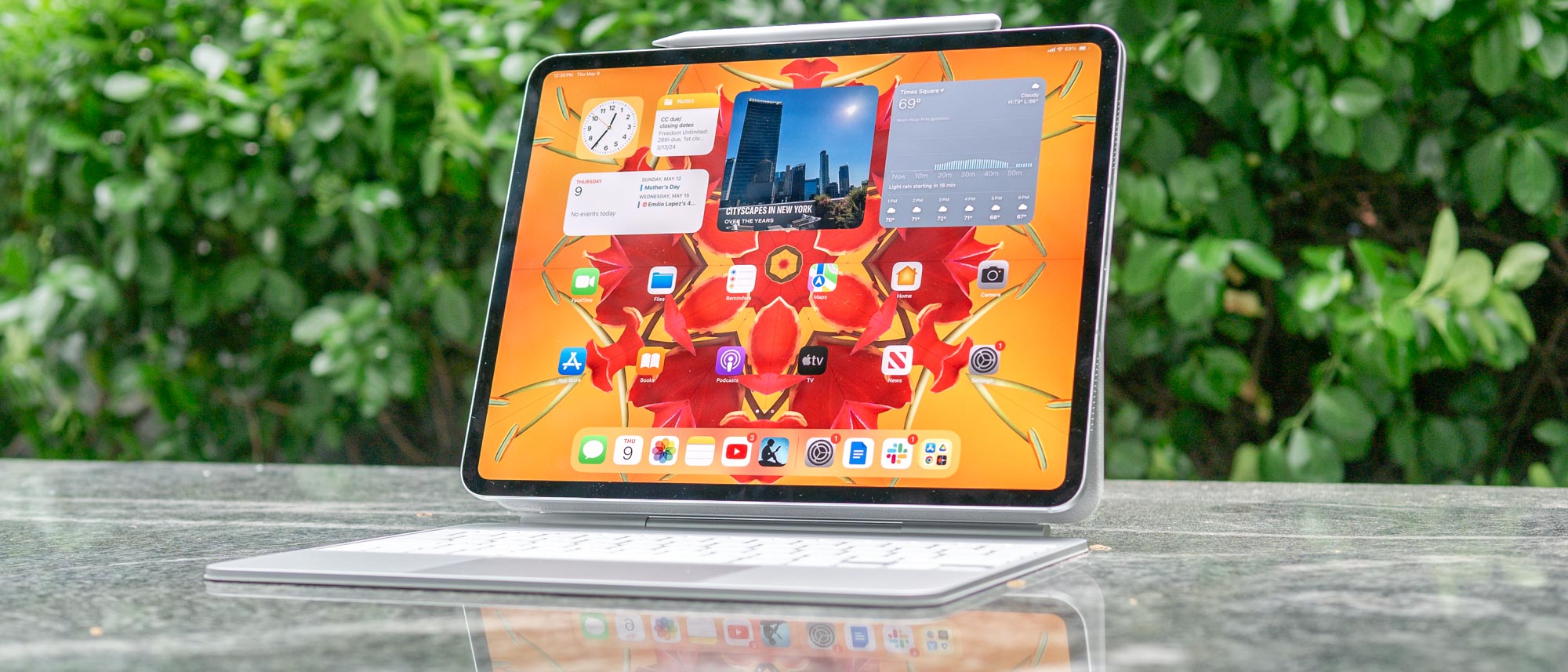Tom's Guide Verdict
The iPad Pro 2024 has it all: a fantastic OLED display, powerful M4 performance, a thin yet solid design and unbelievably long battery life. Though some of its peripherals and upgrades are pricey, Apple has delivered its best premium tablet in years.
Pros
- +
Super thin and light design
- +
Gorgeous OLED panel
- +
Powerful M4 performance
- +
Epic battery life
Cons
- -
Pricey peripherals and upgrades
Why you can trust Tom's Guide
I won’t mince words — the iPad Pro 2024 is one of the best iPads I’ve ever reviewed. Its predecessor, the iPad Pro M2 once reigned supreme as my favorite premium tablet. But the latest model has everything I love about iPad Pro, only enhanced and updated. Right now, it’s the premium tablet to beat.
So what makes the new iPad Pro so great? For starters, the Ultra Retina XDR display is the finest OLED panel my eyes have ever seen. The 2,000,000:1 contrast ratio delivers deep blacks and eye-scorching whites that pair perfectly with the sharp 2,360 x 1,640 resolution. Everything from videos to games and comics looks stunning.
Then we have the thin yet sturdy aluminum chassis that makes the iPad Pro appear more like the iPad Air. Ironically, both 11- and 13-inch iPad Pro models are thinner and lighter than the new iPad Air 2024 tablets, making you question which are the true “Air” slates in Apple’s roster. Thanks to the thinner and lighter design, the iPad Pro is more portable than ever — not to mention more comfortable to hold for long periods.
Apple skipped an M3 iPad Pro and dropped an M4-powered beast on us instead. Our testing reveals this beefy processor runs circles around its predecessors. It can run graphically demanding games like Resident Evil 4 or editing apps like Premiere Pro with ease thanks to the M4 chip.
There isn’t much I don’t like about the iPad Pro. However, there are a couple of drawbacks — both related to price. Adding nano-texture glass at checkout costs an additional $100 and requires an upgrade to 1TB of storage, which ups the cost to $1,699 for the 11-inch Pro and $1,999 for the 13-inch model. And if you want the updated Apple Magic Keyboard to go with it, you’ll need to plunk down an additional $299 or $349, depending on the iPad Pro’s size.
Costly add-ons and peripherals aside, the iPad Pro more than delivers. Find out more in my full review.
iPad Pro 2024 review: Cheat sheet
- What is it? Apple’s premium tablet, featuring an all-new design and a powerful M4 chip.
- What does it cost? The iPad Pro starts at $999 for the 11-inch model and $1,299 for the 13-inch variant, both of which are on sale via Apple’s website. Each is $200 more than their respective predecessors.
- Who is it for? For folks who want an OLED tablet with blazing-fast performance and all-day battery life.
- What do we like? The thin and lightweight design, gorgeous OLED display, and speedy performance.
- What don’t we like? Upgrading to a model with nano-texture glass raises the price of the 11- and 13-inch models to $1,699 and $1,999 (respectively). The Magic Keyboard is also very expensive.
- Anything I should know? All iPad Pro 2024 models currently come with an Apple M4 chip inside, but they aren't all equal. iPad Pro 2024 models with 1TB or more of storage get the full-powered M4 with a 10-core CPU and 10-core GPU, along with 16GB of RAM. But iPad Pro models with less than 1TB of storage come with only 8GB of RAM and a 9-core CPU on the M4, so they will likely perform slightly worse than the 1TB model we review here.
iPad Pro 2024 review: Specs
| Header Cell - Column 0 | 11-inch iPad Pro | 13-inch iPad Pro |
|---|---|---|
| Price | from $999 | from $1,299 |
| Display | 11-inch Tandem OLED (2420 x 1668 pixels) | 13-inch Tandem OLED (2752 x 2064 pixels) |
| Colors | Silver, Space Black | Silver, Space Black |
| Chip | M4 (9-10 CPU cores, 10 GPU cores) | M4 (9-10 CPU cores, 10 GPU cores) |
| Storage | 256GB, 512GB, 1TB, 2TB | 256GB, 512GB, 1TB, 2TB |
| Cameras | 12MP front landscape, 12MP rear | 12MP front landscape, 12MP rear |
| Wireless | Wi-Fi 6E, 5G | Wi-Fi 6E, 5G |
| Size | 9.83 x 6.99 x 0.21 inches | 11.09 x 8.48 x 0.2 inches |
| Weight | 0.98 pounds | 1.28 pounds |
iPad Pro 2024 review: The ups
The iPad Pro impresses thanks to its slim design, outstanding OLED display, powerful performance, epic battery life and repositioned front camera. Apple managed to one-up its excellent predecessor with this beast of a tablet.
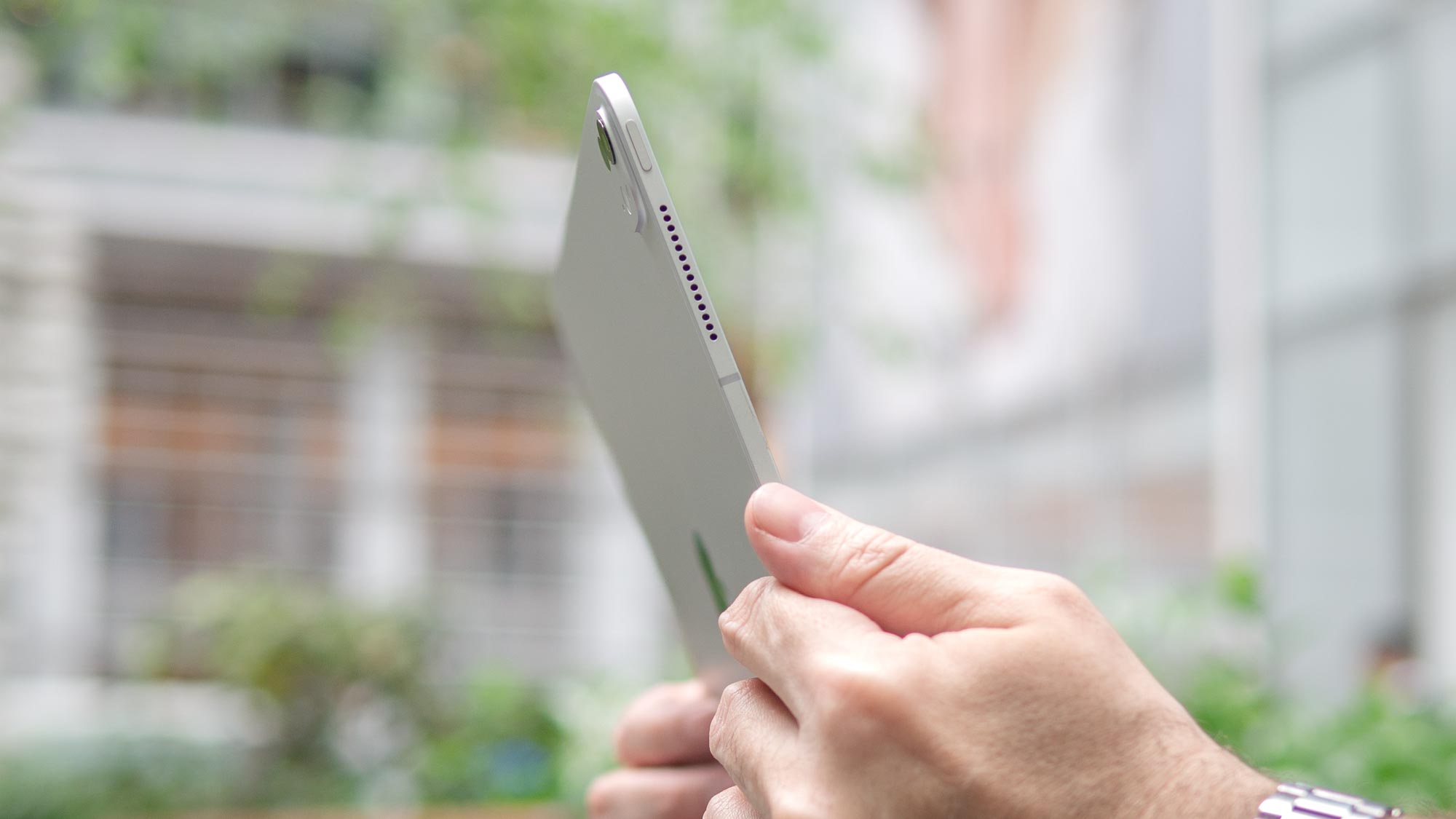
Thinner than Air
Visually, the new tablet isn’t a radical departure from its predecessor. It’s a solid piece of aluminum featuring a large display and thin profile. However, holding the tablet reveals that you’re dealing with an all-new device.
The 11- and 13-inch iPad Pro are thinner and lighter than their predecessors and the new iPad Air tablets. The size and weight differences might not look like much on paper, but they make a huge difference in the real world. For instance, I constantly have to reposition my hands when reading comics on the old 12.9-inch iPad Pro because the big tablet is so cumbersome to hold. That's no longer the case since the new tablet is easier to hold over longer periods.
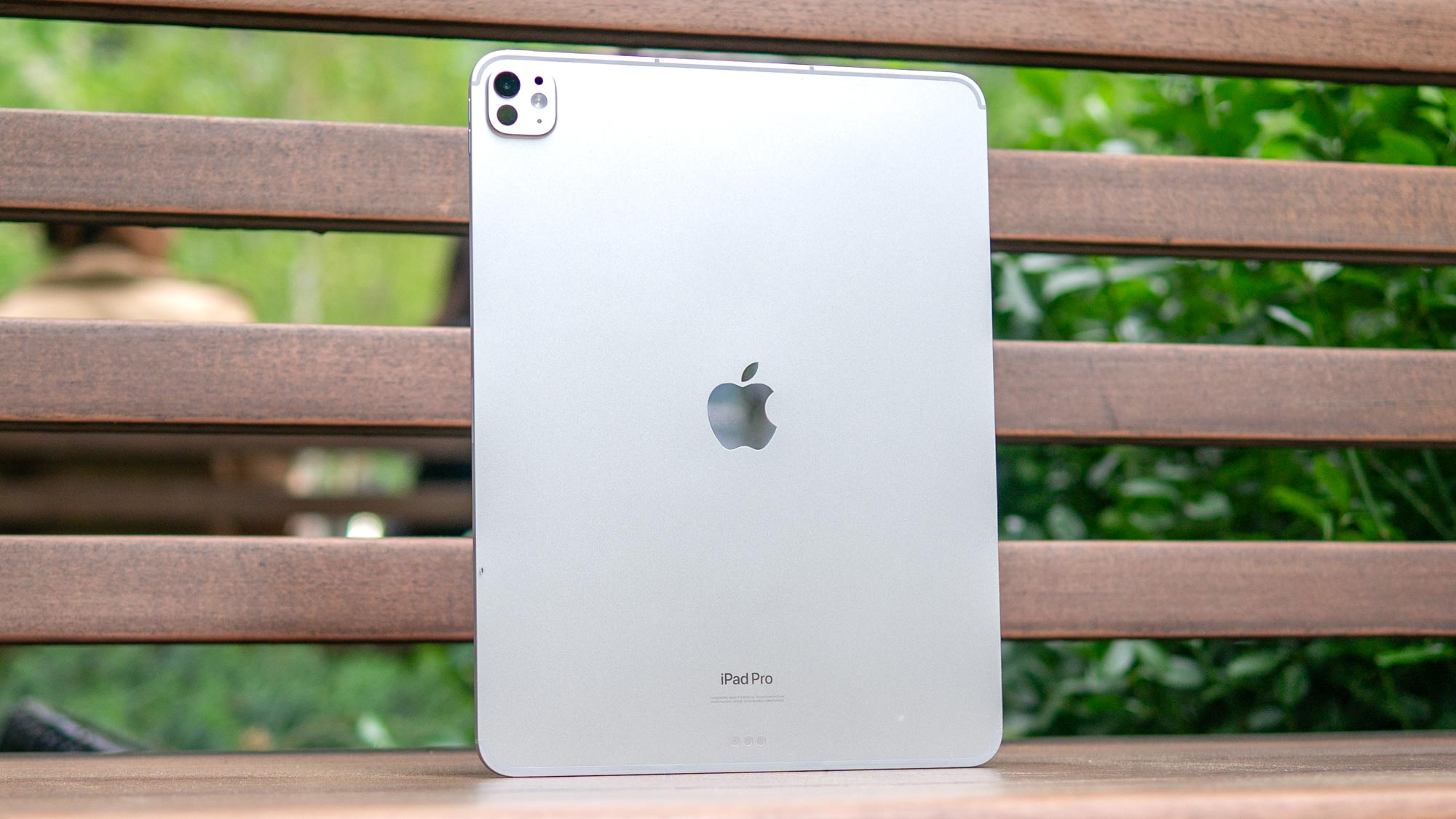
Speaking about changing positions, the tablet’s front camera is now landscape-oriented instead of portrait-oriented. Most people hold tablets in this position, so it’s great that Apple finally moved the front camera (much like it did with the iPad 2022). This makes participating in video calls, taking selfies and using FaceID to unlock the iPad Pro feel more intuitive. I’m a fan of this repositioned front camera.
Like the previous model, the new iPad Pro only has a single USB-C port. That’s a bummer, but not a deal-breaker.
Amazing OLED display
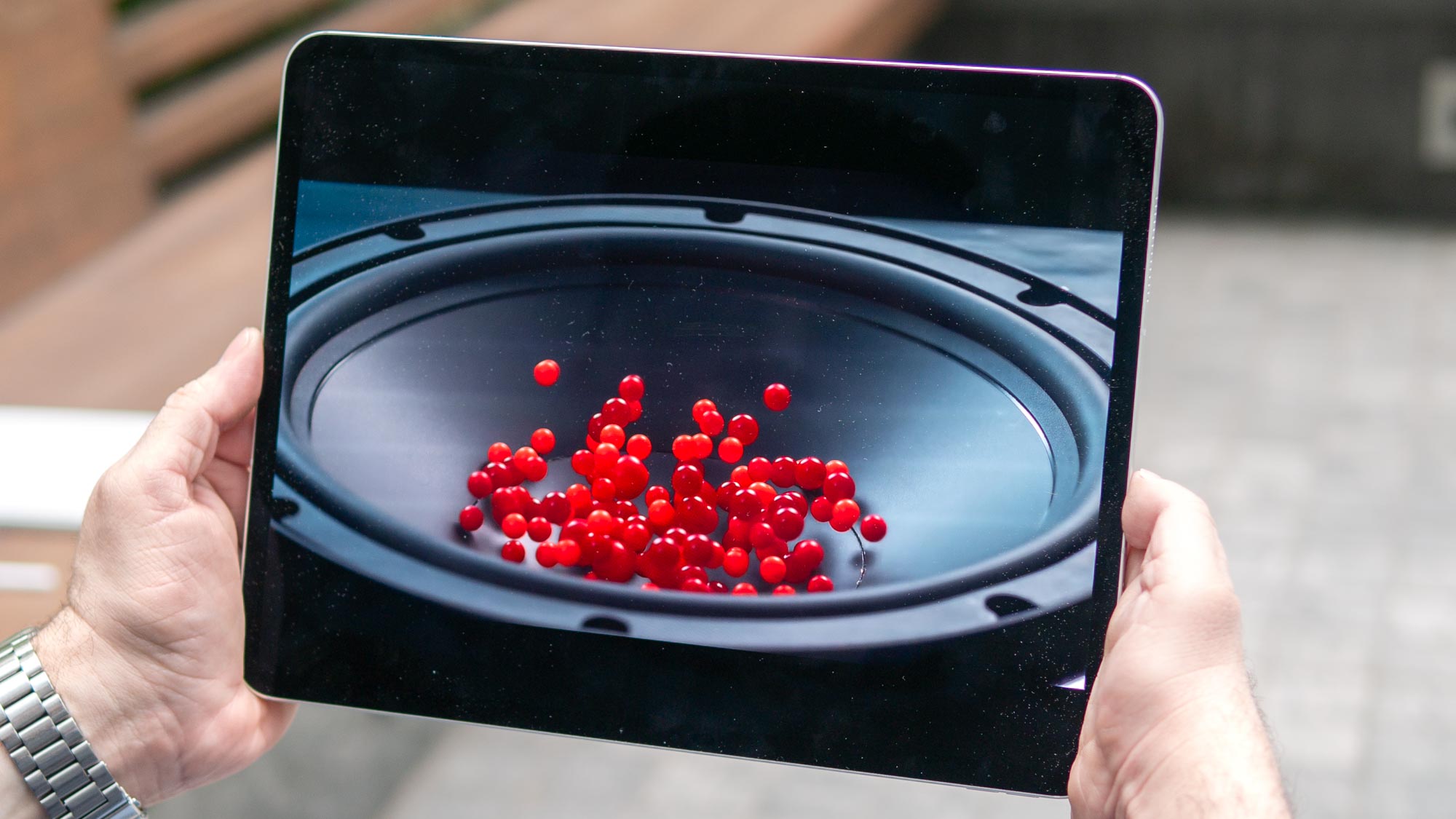
People have been clamoring for an OLED iPad Pro for ages, and now it’s finally here. The new design is nice but the Ultra Retina XDR display (as Apple dubs it) could be this tablet’s main selling for some people. To my eyes, the screen is both bright and colorful. The contrast between dark and light elements is astonishing, delivering beautiful photos and videos. It’s really quite striking.
I watched a YouTube video called “LG Jazz HDR UHD” and was floored by how magnificent it looked on the iPad Pro. The pure black elements served as an excellent contrast to the vibrant colors. On top of that, the 120Hz refresh rate ensured everything moved silky smooth.
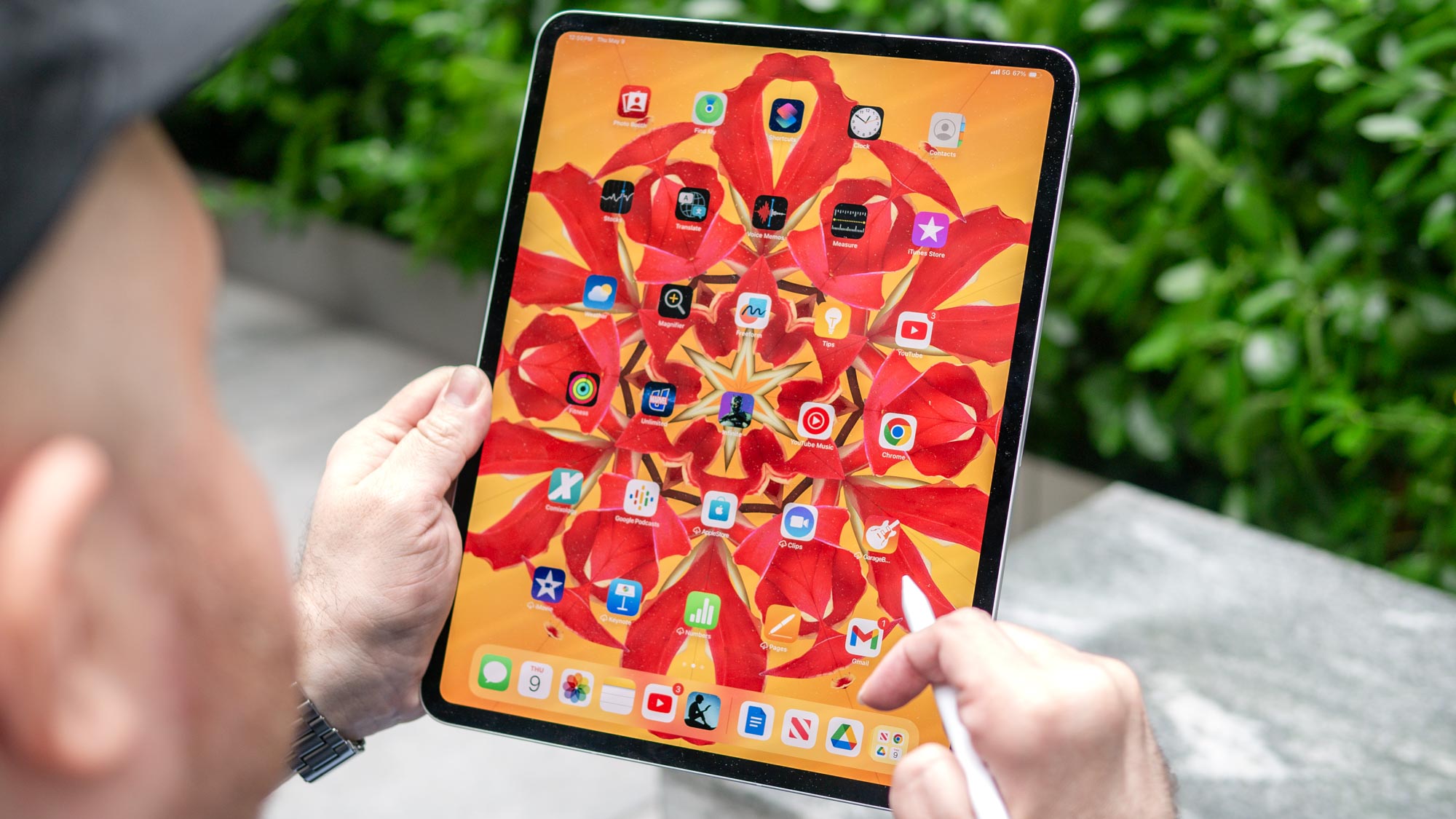
If you like digital comics, you’ll have a great time on the iPad Pro. Color comics like Conan the Barbarian #9 and monochrome books like Savage Sword of Conan #2 look equally fantastic. The former’s rich colors and dark shadows make the story feel more alive, while the latter’s deep black inks let me see individual lines in great clarity.
| Header Cell - Column 0 | iPad Pro 2024 | iPad Pro 2022 |
|---|---|---|
| SDR brightness (nits) | 561 | 586 |
| HDR brightness (nits) | 1510 (40% of display) | 1577 (40% of display) |
| sRGB | 117.4% | 117.1% |
| DCI-P3 | 83.2% | 82.4% |
| Delta-E | 0.2 | 0.3 |
Moving over to our display test, the new iPad Pro’s color reproduction, color accuracy and brightness aren’t much different than the previous model. However, the OLED display helps everything appear much richer — especially colors. Even if the iPad Pro 2024 has comparable color values to the previous model, the overall picture quality is much better thanks to the display’s OLED technology.
I’m a professional writer but I have a hard time conveying just how good the iPad Pro’s OLED display appears. This is arguably the best OLED display I’ve ever seen on a tablet. You need to see it to believe it.
Incredible performance
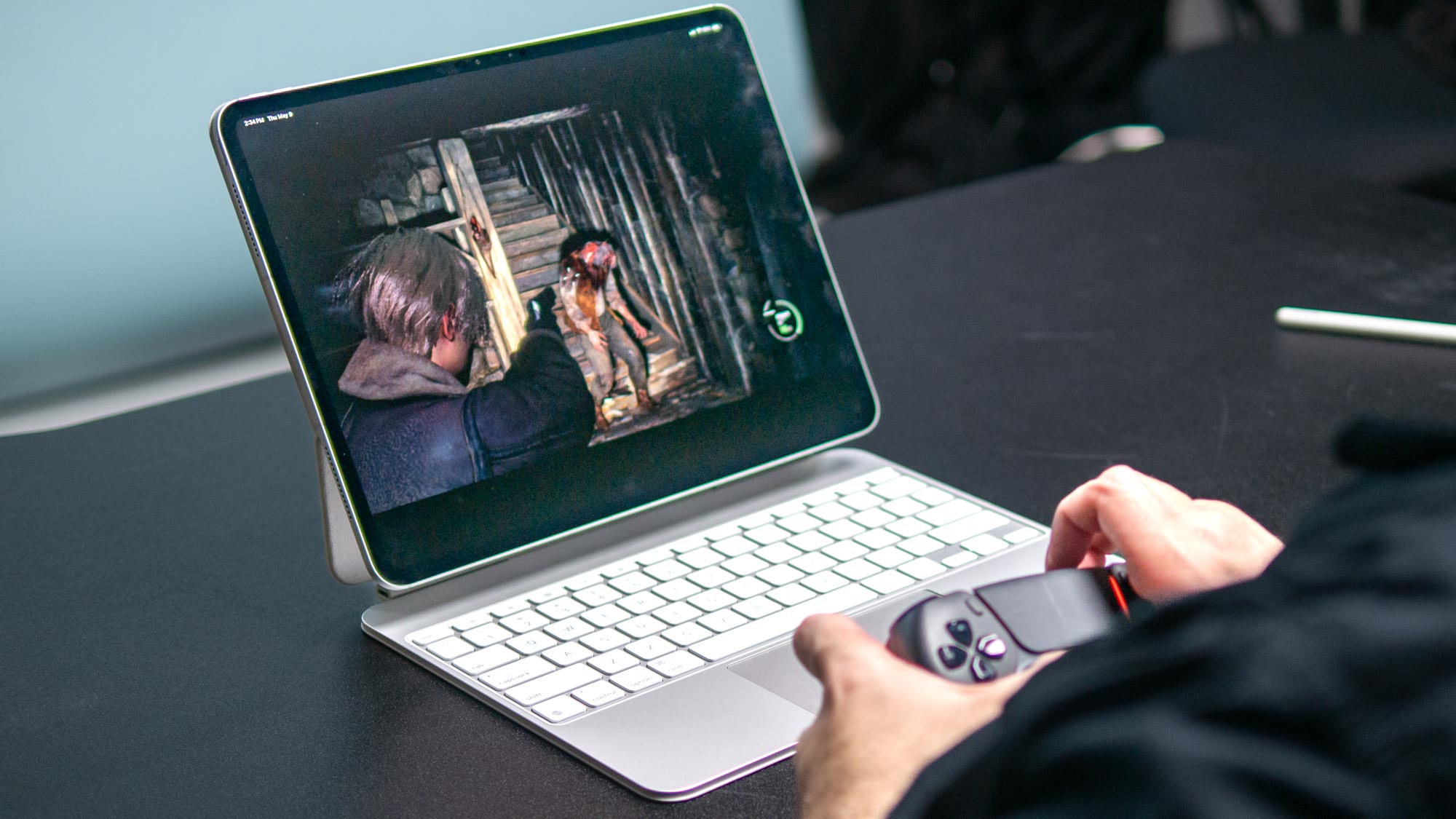
Our 13-inch iPad Pro review unit packs an M4 chip with a 10-core CPU, a 10-core GPU and an updated Neural Engine (which the rest of the industry calls an NPU). Our tablet has 1TB of storage but no nano-texture glass. Toss in Wi-Fi + Cellular, and this review unit is valued at $2,099 as configured.
Like the M3 chip which also utilizes 3nm technology, the M4 processor features hardware-accelerated mesh shading, ray tracing and Dynamic Caching — all of which are a first for the iPad platform.
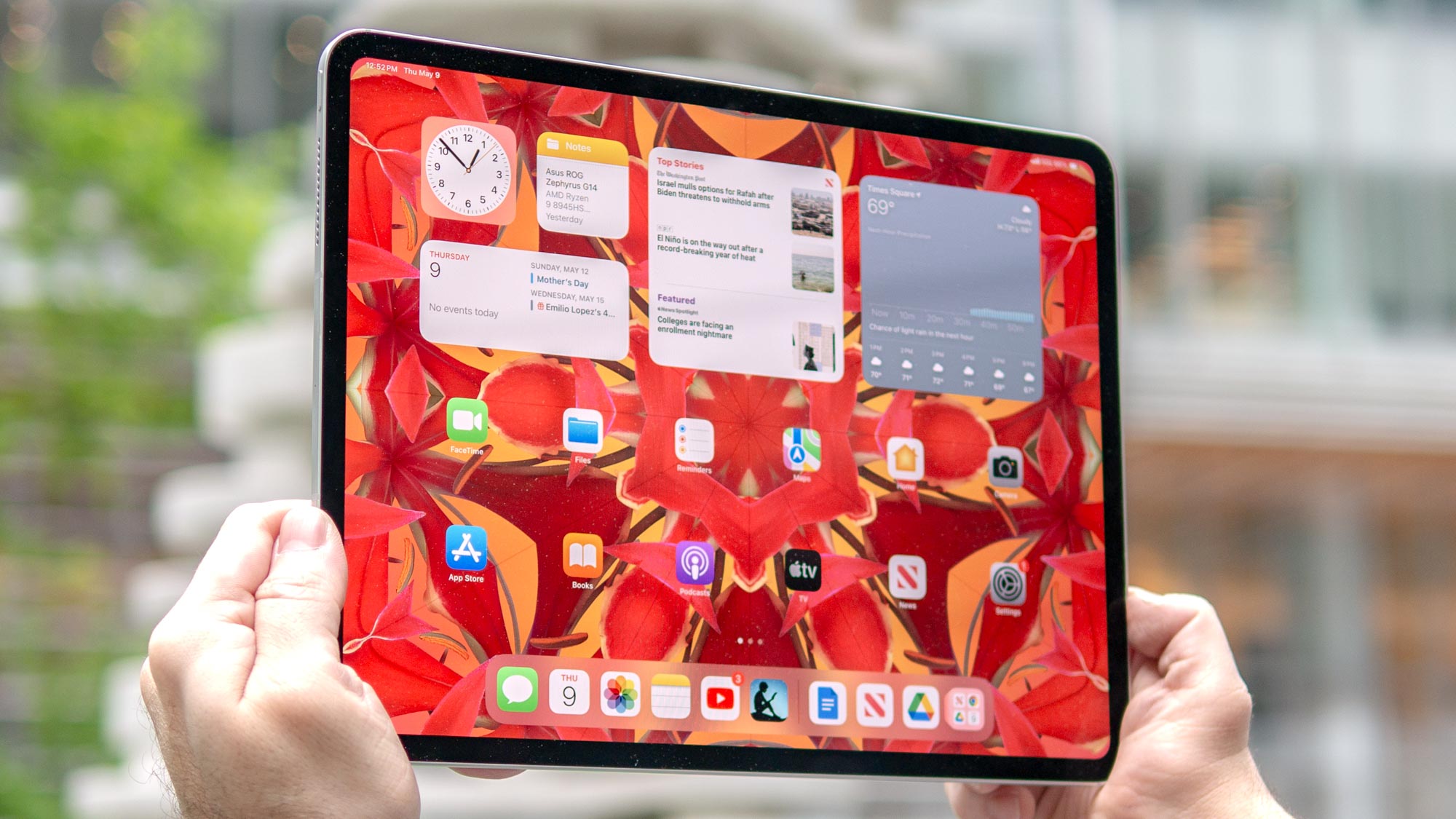
I used the iPad Pro as a laptop and the tablet had no problem handling my regular workflow, which usually has me juggling multiple open tabs and applications. The iPad Pro never slowed down even when I tossed a YouTube video into the mix. The tablet also handled digital comics without a hitch.
The iPad Pro also did well in our benchmark tests. On Geekbench 6, which tests overall CPU performance, the M4-driven iPad Pro performed almost twice as fast as its M2 counterpart.
However, there is one caveat: We’re comparing Geekbench 6 scores for the iPad Pro 2024 to older Geekbench 5 scores for the 2022 model, since we switched versions a little while back. The important thing to know is that Geekbench 5 results are not directly comparable to Geekbench 6 scores, but the huge difference between the two here tells you all you need to know: The iPad Pro 2024 is significantly faster than its predecessor. The new tablet also performed faster in our Adobe Premiere test, but not by a staggering amount of time.
| Header Cell - Column 0 | iPad Pro 2024 | iPad Pro 2022 |
|---|---|---|
| Geekbench (single-core) | 3,700 | 1,862 |
| Geekbench (multi-core) | 14,523 | 8,500 |
| Adobe Premiere (mins:secs) | 0:19 | 0:23 |
| 3D Mark Wild Life Extreme Unlimited | 8,529 / 51 fps | 6,565 / 39 fps |
What about gaming? Resident Evil 4 runs fairly well, though it was short of the 60 frames per second standard most gamers like myself desire. I didn’t have a way to see the game’s exact frame output, but to my eyes, it seems to be a steady 30 fps. That’s not great, but it’s still playable.
Lastly, we ran the 3D Mark gaming benchmark on iPad Pro. Not only did it score better than the previous model, but it also pumped out more frames per second. I’m eager to see how iPad games optimized for the M4 chip will perform.
All-day battery life
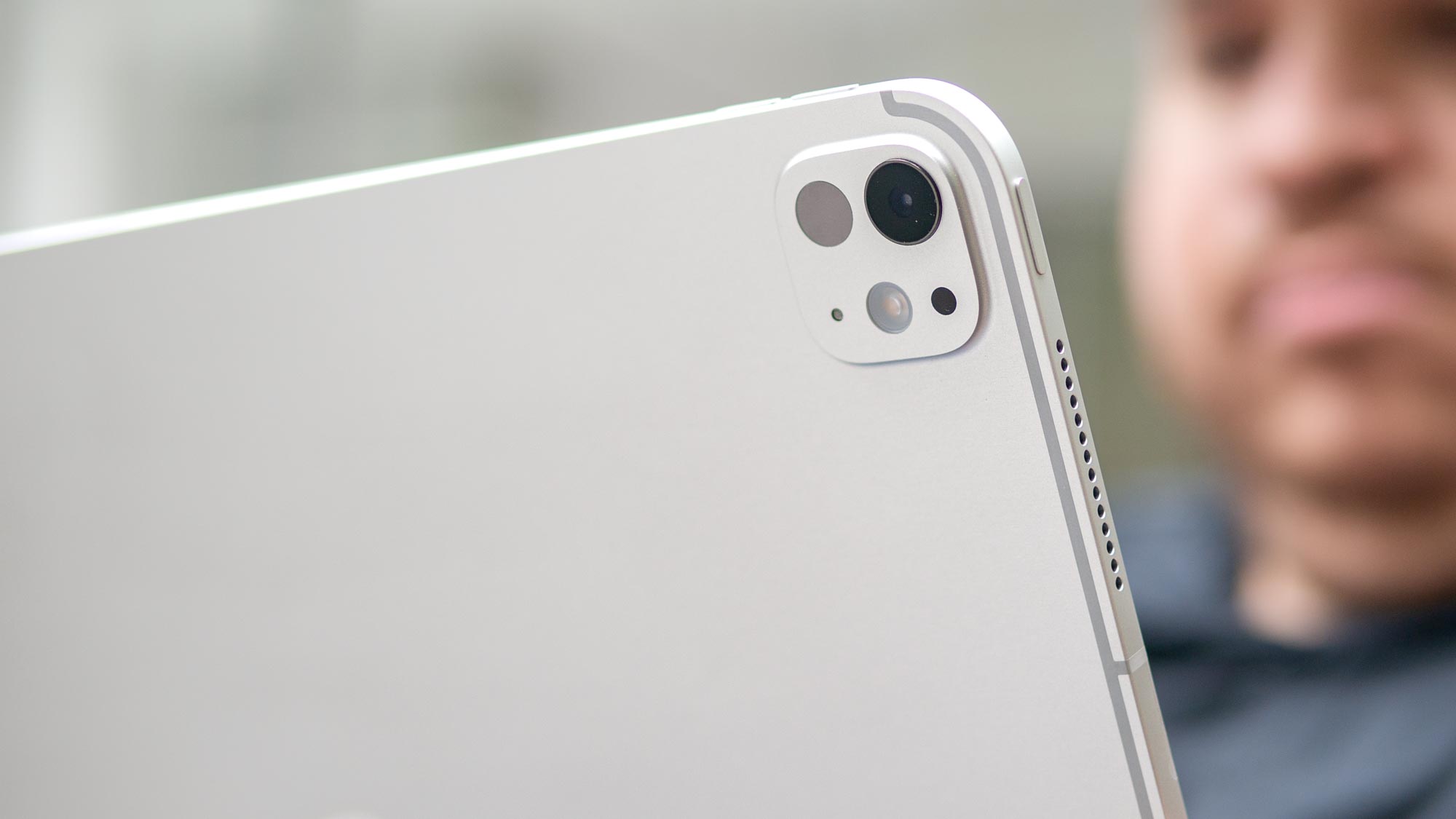
Before this review I wondered if the iPad Pro’s OLED display and beefier M4 chip would negatively impact battery life. Thankfully, this isn't the case as the iPad Pro lasts much longer than Apple claimed, at least according to our testing.
| Header Cell - Column 0 | Time (hours:mins) |
|---|---|
| iPad Pro 2024 | 13:13 |
| iPad Pro 2022 | 10:39 |
In our battery test which involved continuous web-surfing over Wi-Fi with the display set to 150 nits of brightness, the iPad Pro lasted for an astonishing 13 hours and 13 minutes. That not only beats the 10 hours Apple promised but also breezes past the iPad Pro M2’s 10 hours and 39 minutes of battery life.
This is an incredible result that makes the iPad Pro 2024 the new premium tablet to beat in terms of battery life.
iPad Pro 2024 review: The downs
As a device, the iPad Pro is a marvel of engineering. Unfortunately, if you want to kit the tablet out with upgrades or peripherals, it’s going to cost you. A lot.
Nano-texture glass is a pricey upgrade
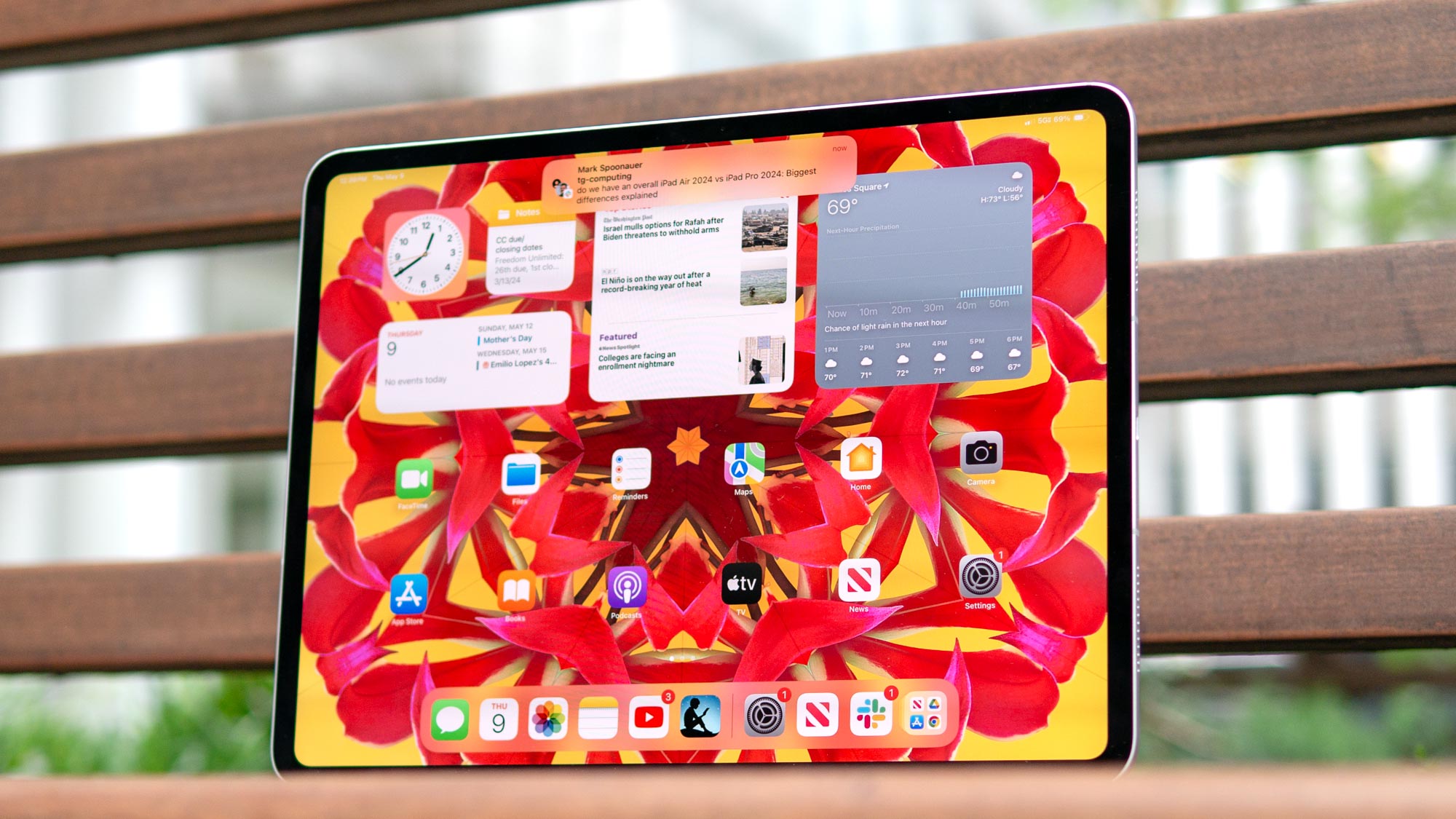
You can upgrade both iPad Pro models to include nano-texture glass, which makes the display more anti-reflective. This should be a useful feature when using the tablet outdoors or in a space with overhead lights. However, upgrading to nano-texture glass isn’t cheap.
Nano-texture glass is only an option for the 1TB and 2TB iPad Pro models. Upgrading to 1TB at a minimum raises the price by $600 for both models on its own, but when you toss in the extra $100 for nano-texture glass, that’s a total of $700 extra!
If you already wanted more than 512GB of storage or the extra comforts of the 1TB models (they come with a full-powered M4 and 16GB of RAM, while iPad Pros with less than 1TB of storage have a weaker M4 and 8GB of RAM) then perhaps this won’t be an issue. But unless you’re a creative professional who needs to store lots of videos and photos on the iPad Pro, most people (arguably) don’t need 1TB of storage on a tablet. In that sense, you’re expending the better part of $1,000 for something you don’t need just for nano-texture glass.
Great peripherals at a steep price
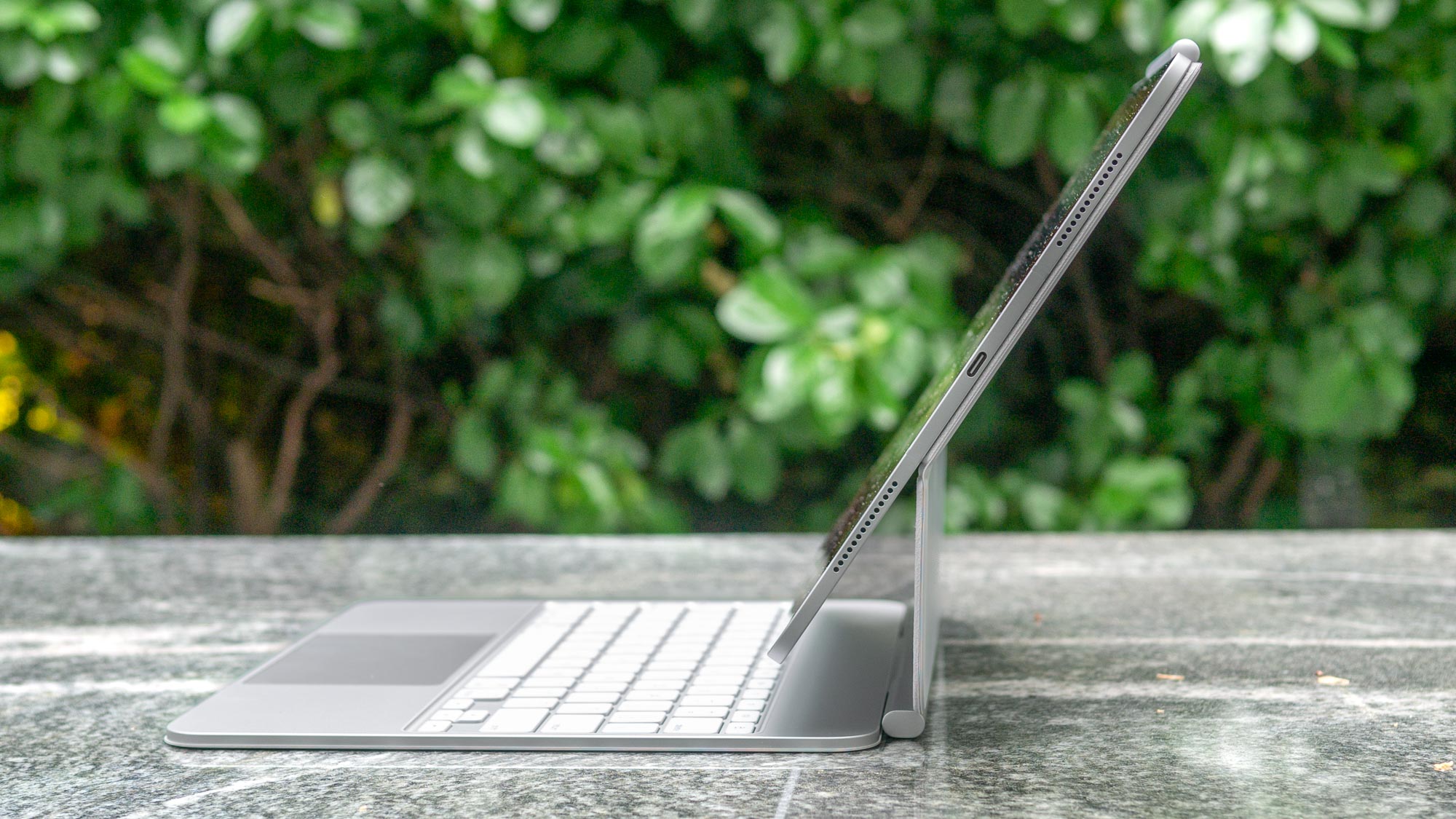
The Apple Magic Keyboard and Apple Pencil have always been useful peripherals that help you get more functionality from the iPad Pro. Both have received updates that enhance the iPad Pro experience.
The new Magic Keyboard’s palm rests and touchpad have an aluminum finish that’s reminiscent of a MacBook. Similarly, the larger touchpad also reminds me of an Apple laptop — as does the new Magic Keyboard’s flatter hinge. As a bonus, this peripheral feels lighter than before and doesn’t add a lot of weight to the iPad Pro.
Typing on the new Magic Keyboard is quite nice thanks to how pleasant the aluminum feels against the palms. The large touchpad also feels smooth and is as responsive as ever. I also enjoy the keycaps, which feel thicker and have more travel distance.
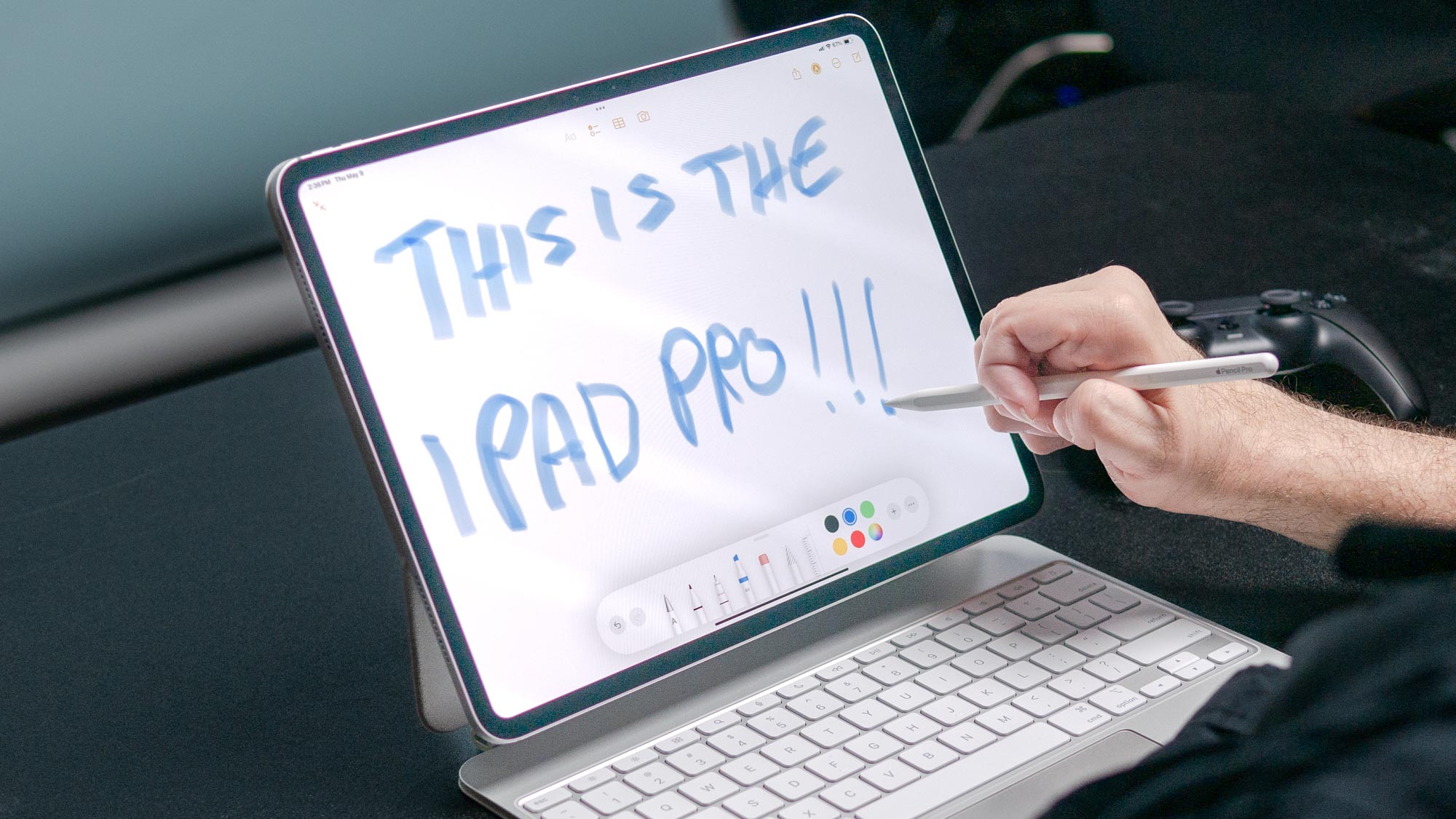
The new Apple Pencil Pro ($129) has some nifty extra features over the basic Pencil. This includes a rollable barrel you can rotate to intelligently switch pen styles, haptic feedback and squeeze to control the input in newer ways. The new barrel roll feature is particularly impressive since you can change a line’s thickness by twisting the pen’s orientation. The Apple Pencil Pro feels exactly like its predecessor, which is great since that’s my favorite stylus.
I like both peripherals but they don’t come cheap. For instance, the Magic Keyboard costs $299 for the 11-inch iPad Pro and $349 for the 13-inch model. If you want to use the 13-inch inch iPad Pro as a laptop replacement, you’ll have to spend at least $1,648. At that point, you might as well get a MacBook Air M2, which costs $999 to start.
At $129, the Apple Pencil Pro won’t crush your bank account. If you’re a casual or professional artist, I don’t think that price is too bad. But if that’s still too expensive, you can always opt for the $79 Apple Pencil with USB-C, though it lacks the Pro's advanced features and doesn’t wirelessly charge when magnetically attached to the iPad Pro.
iPad Pro 2024 review: Verdict
The iPad Pro 2024 is an exceptional tablet. Its vivid OLED display is a marvel to behold and the new thin and light design makes it more portable than ever. I’m also a fan of its speedy M4-powered performance and astonishing battery life. Sure, its peripherals are expensive, but as a device, the iPad Pro has everything you could ever want from a tablet.
Apple Intelligence features like Math Notes and Smart Scripts are intriguing but won't be much use unless you often do math or write on your tablet. Right now, the iPad Pro (and iPads with M-series chips running iPadOS 18) don't have a lot of dedicated AI features — with most also available on iPhones with iOS 18. Apple says the M4 and its onboard Neural Engine NPU is an “absolute powerhouse for AI,” but I’m still not convinced.
Even if the iPad Pro never becomes an "AI powerhouse," it’s still an incredible tablet for people who want a powerful slate with a gorgeous OLED display. The iPad Pro has set a standard for all premium tablets to follow.

Tony is a computing writer at Tom’s Guide covering laptops, tablets, Windows, and iOS. During his off-hours, Tony enjoys reading comic books, playing video games, reading speculative fiction novels, and spending too much time on X/Twitter. His non-nerdy pursuits involve attending Hard Rock/Heavy Metal concerts and going to NYC bars with friends and colleagues. His work has appeared in publications such as Laptop Mag, PC Mag, and various independent gaming sites.
